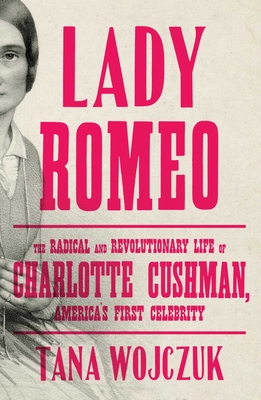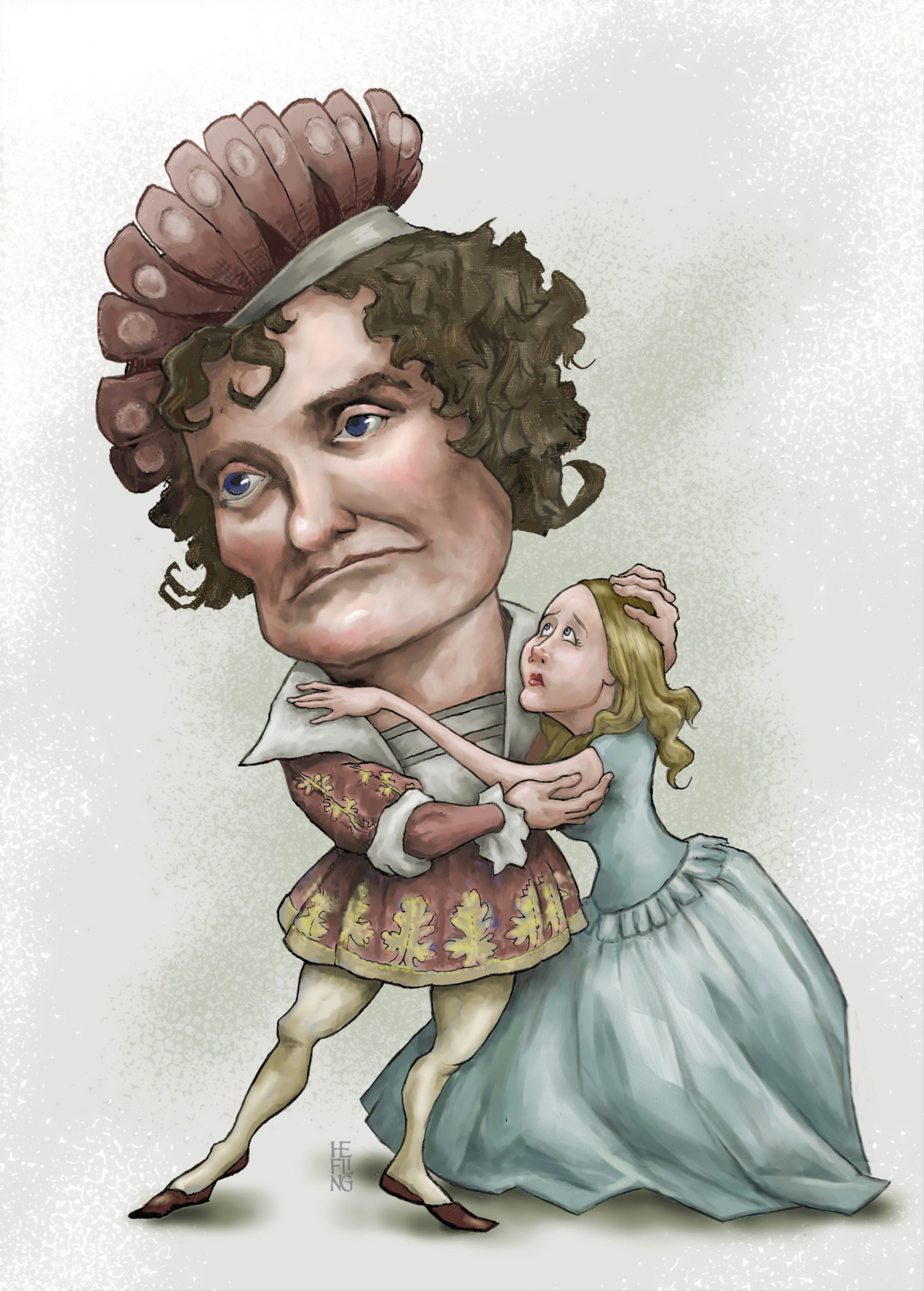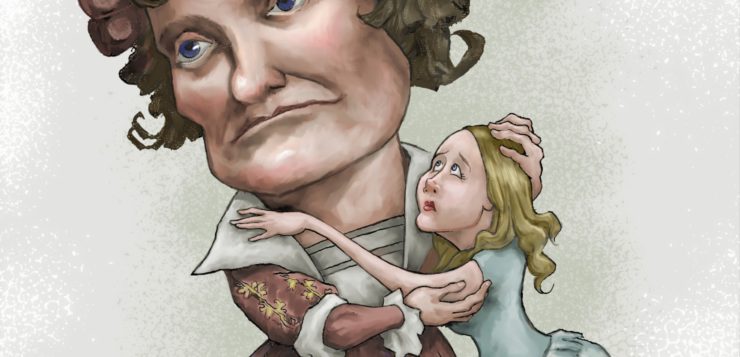 LADY ROMEO
LADY ROMEO
The Radical and Revolutionary Life of Charlotte
Cushman, America’s First Celebrity
by Tana Wojczuk
Simon & Schuster. 240 pages, $27.
SINCE HER DEATH in 1876, Charlotte Cushman, like her contemporaries Harriet Hosmer and her lover, sculptor Emma Stebbins, has been neglected, primarily because she was a lesbian. As author Tana Wojczuk observes in Lady Romeo: “To men, she embodied the man they wanted to be, gallant, passionate, and excellent sword fighter. To women, she was a romantic, daring figure, their Romeo.”
As a child, Cushman went from relatively comfortable circumstances to acute poverty. She was viewed as too tall at 5’7”, too unladylike in appearance, and had to live closeted throughout her life while vicious rumors circulated about her. She was resilient despite her personal and professional setbacks. Immensely talented, Cushman prevailed to become the definitive Shakespearean actress of her time, specializing in both male and female roles.
Cushman was a first-born rebel with a wicked sense of humor who loved to read, run fast, and had an aversion to fools, whom she did not suffer well. She was a typical tomboy, climbing trees, cutting dolls heads open to see what was inside, quick to anger, lousy at sewing but good with tools and math. Encouraged by an uncle, Augustus, she excelled at dramatic reading and decided to be an actress, much to her conservative mother’s chagrin. Her father left the family debt-ridden, and Cushman’s mother had to open a boarding house to make ends meet. Cushman dropped out of school at thirteen, taking any job she could get to help support her family.
In Lady Romeo, Tana Wojczuk seamlessly sets the scene of Cushman’s life against the historical currents of her times. Cushman’s main asset was her remarkable voice, and she determined to use it to lift her family out of poverty. Taller than most men of her time, she had a “lantern jaw” and moved like a “pythoness.” From her first performance as Lady Macbeth, her talent quickly made her the cash cow of New York’s Bowery Theater.
Despite personal tragedies, including the death of her adored little brother Augustus, her sister’s pregnancy, and abandonment by her heartless charlatan of a father—which forced her to become the man of the family—she soldiered on. Her life reads like the “Perils of Pauline.”
 In 1843, she fell in love with the painter Charles Sully’s daughter Rosalie. They privately committed to each other in what amounted to a marriage ceremony. Ugly rumors began to circulate about the nature of their relationship. Fearing repercussions for herself and Rose, Cushman stoically boarded the steamship Garrick on her way to London and stardom. But the stories about Rose and Charlotte’s lesbian relationship eventually led to Rose breaking up with her in a letter. Cushman resolved to put her career ahead of her relationships, so on she went to her performances as Romeo, which made audiences adore her all the more. Not only did Cushman make a convincing man on stage, she acted like one in real life. She was her family’s breadwinner, a charismatic female lover who attracted beautiful, intelligent, and talented women. By 1845, she was reputed to have accumulated a net worth of $600,000.
In 1843, she fell in love with the painter Charles Sully’s daughter Rosalie. They privately committed to each other in what amounted to a marriage ceremony. Ugly rumors began to circulate about the nature of their relationship. Fearing repercussions for herself and Rose, Cushman stoically boarded the steamship Garrick on her way to London and stardom. But the stories about Rose and Charlotte’s lesbian relationship eventually led to Rose breaking up with her in a letter. Cushman resolved to put her career ahead of her relationships, so on she went to her performances as Romeo, which made audiences adore her all the more. Not only did Cushman make a convincing man on stage, she acted like one in real life. She was her family’s breadwinner, a charismatic female lover who attracted beautiful, intelligent, and talented women. By 1845, she was reputed to have accumulated a net worth of $600,000.
In sixteen chapters and an epilogue, Wojczuk takes us on a perilous journey from “The First Disaster” through the Civil War to Cushman’s painful death from breast cancer at the age of 59. When she was dying, the “American Queen of tragedy,” prayed: “God take me quickly at any moment so that I am not allowed to torture those I love by letting them see my pain.”
Wojczuk is a graceful writer, a careful researcher, and a passionate biographer. And yet, for all her painstaking efforts to describe Cushman’s most intimate relationships, they remain elusive. For example, her relationship with the American sculptor Emma Stebbins is never fully fleshed out and so doesn’t quite come alive. We gain little insight into why Cushman fell in love with anyone, or why she was attracted to the women she loved. Moreover, this biography could have used a more scrupulous editor. The text randomly hops, skips, and jumps from one time period to the another. This haphazard organization sometimes takes away from the cohesive picture that Wojczuk wants to paint of Cushman’s triumph over adversity: what she had to endure to survive, the subtle torture of living a closeted life, the rigors of perfecting her craft as an actor. Still, this beautifully written biography shows how Cushman resisted oppression despite the hateful choices forced upon her by a homophobic society.
Cassandra Langer is the author of Romaine Brooks: A Life(Wisconsin).






